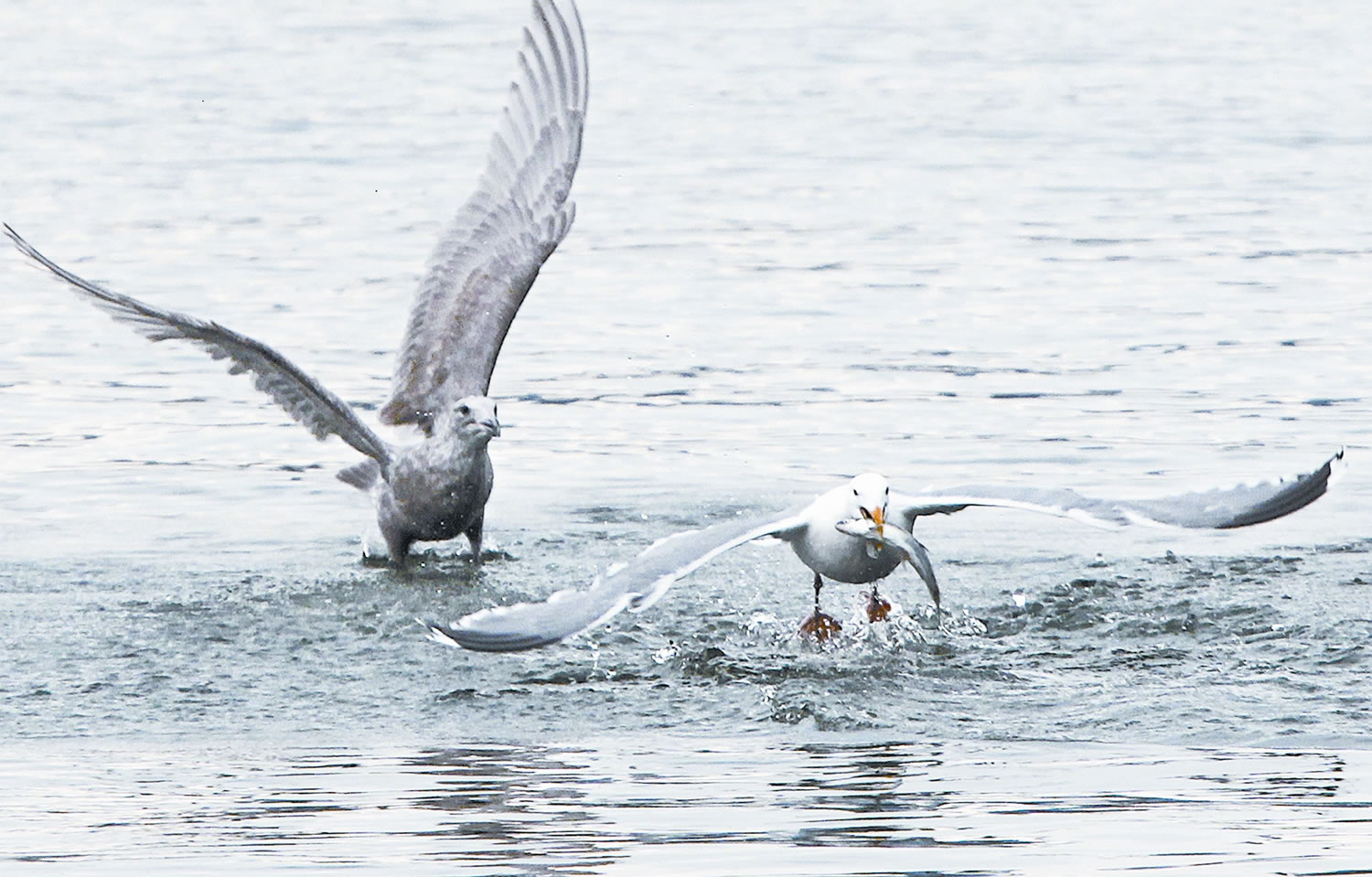A mass of smelt at least 20 miles long is moving up the Columbia River, attracting thousands of birds and hundreds of sea lions and seals.
Though the birds and marine mammals are feasting on the little fish, dipping by people is likely years away as researchers work on a plan to get smelt off the endangered species list.
Smelt are plentiful in the Columbia River from around the mouth of Grays River upstream to Abernathy Creek, according to Craig Olds, the lead smelt biologist for the Cowlitz Indian Tribe.
Several people have called The Daily News recently and reported large numbers of birds and marine mammals around the Cowlitz-Wahkiakum County Line.
“There are hundreds, if not thousands, of birds down there,” Olds said Friday.
Last week, researchers spotted about 20 marine mammals, mostly seals, just downstream of the mouth of the Cowlitz, he said.
Mike Lange of Castle Rock said his fishing buddies have reported seeing even more than that near Kalama. Sea lions also have been plentiful around Cathlamet.
“A lot of people were complaining about the noise of them barking like crazy,” Lange said.
Other anglers have reported hundreds if not thousands of seals and sea lions.
An early small run of smelt appeared in the Cowlitz River in January, Olds said.
The main run typically enters the Cowlitz in February.
“It appears that they are quite late,” said Olds, who was on the Cowlitz looking for the smelt, also known as eulachon, on Friday.
The fish can swarm into the Cowlitz as late as March, however. “It’s rare but it’s happened in the past,” Olds said.
During the early run, the tribe’s researchers observed smelt as far upstream as the Toledo area.
They have confirmed smelt over a wider area than was documented, including Abernathy, Mill and Germany creeks west of Longview.
The Cowlitz Tribe and Washington Department of Fish and Wildlife are conducting ongoing research projects on smelt in an effort to develop more accurate ways of measuring the run sizes.
In past years, the state relied on the commercial catch to judge the run size; it wasn’t very precise but there were so many smelt filling dippers’ buckets that it wasn’t considered important.
However, smelt runs started to falter in the 1980s, and the last decent run was in 2003. In 2010, the National Marine Fisheries Service listed smelt as threatened under the federal Endangered Species Act, and sport and commercial dipping has been prohibited since then.
Researchers are developing a way to measure the run by counting the number of eggs and larvae. There’s no practical way to count adult fish because they’re so small and spawn out of sight. Other research is focusing on using sonar to measure the size of smelt runs.
Though most wild runs of salmon and steelhead on the Columbia River are ESA-listed, anglers can keep hatchery fish that supplement the runs. But all smelt are wild, naturally spawning fish, and no one is proposing raising them in hatcheries.
Dipping will only return when fishery officials believe the runs are strong enough to support it, which is unlikely for years.



